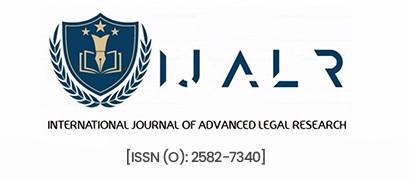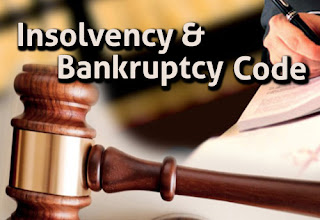The period before Insolvency and Bankruptcy Code, had various scattered laws relating to IBC which caused insufficient and ineffective results with extreme delays. Considering this, the IBC in 2016 was introduced as money bill recommended by TK Viswanathan Committee. IBC predicts resolution of Corporate insolvencies in two-stage procedure. First stage is the CIRP process that is the Corporate Insolvency Resolution Process and the Second stage is the Liquidation process that is Winding up. IBC was established in 2016 with 255 sections and 11 schedules.
The Code combines two bodies that is the IBBI and the Adjudicating authorities.
- The IBBI (Insolvency and Bankruptcy Board of India) is the regulatory body for Insolvency Resolution Process.
- Adjudicating authorities – The Limited Liabilities Partnerships (LLPs) and the other companies is left up to National Company Law Tribunal (NCLT) and the Adjudication of Partnerships and the individuals is left to Debt Recovery Tribunal (DRT).
There is an increase in the threshold limit for filing an application or petition under section – 7, 9, 10 of Insolvency and Bankruptcy Code.
Section – 7 of the code allows Financial creditor to file for initiating the Corporate Insolvency Resolution Process (CIRP) against a corporate debtor, Section – 9 provides for application of insolvency by an Operational creditor, while Section – 10 is for initiation of insolvency proceedings by a Corporate applicant.
The threshold limit of default has been increased from 1 Lakh to 1 Crore. This has been done for safeguarding the MSME sectors that is Micro, Small and Medium Enterprises. The MSME sectors contributes around 34% of our GDP ( Gross Domestic Product) and it also employs around twelve crore people of Indians. So, the default amount has been increased, mainly giving relief to MSME sectors in specific.
So, the Government planned to increase the default. Only when there is a default of more than 1 Crore, the Creditor or the Company is allowed to file a petition under Section – 7, 9, 10 of the Insolvency and Bankruptcy Code.
The most important development in the Insolvency and Bankruptcy Code is the Implementation of Insolvency and Bankruptcy Code. This Ordinance has made two large changes to the Insolvency and Bankruptcy Code. Here, nowhere this Ordinance talks about MSME sectors.
According to the nature and extent of the protection granted by the Government under Section – 10(a), it provides a protection period and the protection period is from 25th of March 2020 till 24th of September 2020, this is the first step of protection period which is granted and it is for a period of six months and it may extend to a year from date modified and not exceeding one year.
For instance, if there is a default in payment of invoices in the month of April 2020 or May 2020 and the company does not able to pay them and this is a default during this protection period, from 25th March to 24th September, the company is protected under Insolvency Code, if the default is committed during this protection period.
And if the question raises asking that how long this protection available to the company. For that, if there is a default in payment of invoices in April or May 2020, in this case, one cannot file a petition under insolvency code for a period of 6 months after that, they are eligible to file a petition under Section – 9 of Insolvency Code. The default committed in this period of 6 months or further period as the Government may extend up to 1 year, if there is a default, ‘ You can never find an Insolvency petition’.
The Specific words mentioned in a proviso to Section – 10(a), i.e., “Provided that No application shall ever be filed for initiation of Corporate Insolvency Resolution Process of a corporate debtor for the said default occurring during this protection period”. One can never file an insolvency petition for the default occurring during this six month protection period or even thereafter
The another aspect of Section – 10(a) is, What if the default is committed on 24th of March 2020 or some prior period of 25th March 2020. In this case, one cannot wait for the expiry of the protection period. They can initiate an insolvency petition at any time provided it is within limitation for the default committed on 24th March 2020 or some prior period to 25th March 2020.
So, if the company is in bad shape but they wanted to continue the business even in the financial trouble, it is like when a company pays the employees before paying the bank and continues the business, and then in such a case the Government has protected them from their personal liabilities for this default period that is during this protection period of six months. So, now when you continue the business even in the turbulent times, the directors and the partners are not made personally liable.
CONCLUSION:
The changes in the Insolvency and Bankruptcy Code deals with the developments of the business. Insolvency Ordinance has bought a few changes in the law with the IBC. The President of India promulgated the Insolvency and Bankruptcy Ordinance on June 5th of 2020. It gives relief to the company who are unable to pay debts or companies with default during this pandemic crisis, the protection period planned by the Government has helped them a lot. Many companies has declared bankruptcy and facing disruption in the business. This amendment gives relief to those companies which are suffering. This Ordinance and amendments strongly leads to a development in the Insolvency and Bankruptcy Code.
REFERENCES:
- Insolvency and Bankruptcy Code, 2016
- m-economictimes.com
- www.investindia.gov.in
- Image Credits https://images.app.goo.gl/JEc56H3dLJGwqDBb9



This one gives a clear idea about latest ordinance regarding insolvency. Great effort 👍